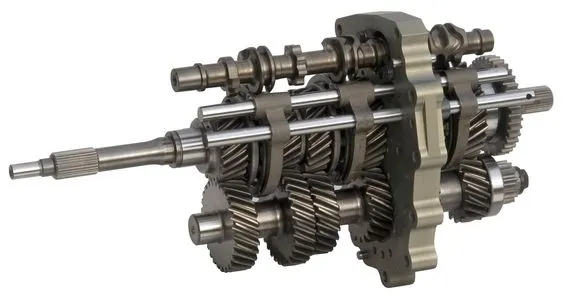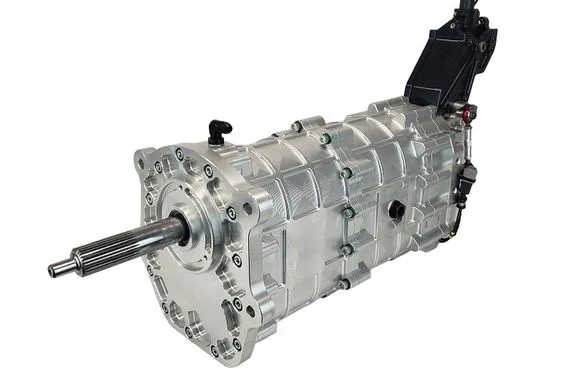The Sequential Gearbox Explained
At the heart of the sequential gearbox's appeal is its simplicity and efficiency in shifting gears. Unlike the traditional H-pattern in manual transmissions, where the driver must navigate through a grid to select gears, the sequential setup requires only a push or pull action. This mechanism significantly reduces shift times and minimizes driver error.
Gear Selection Mechanism
The mechanism behind gear selection in a sequential gearbox is straightforward yet ingenious. Drivers shift up by pulling a lever or paddle toward them and shift down by pushing away. This action can be performed quickly, without the need to find the next gear position visually, allowing the driver to maintain focus on the road or track.
Clutch System
The role of the clutch in a sequential gearbox varies. In race cars and high-performance vehicles, drivers may need to engage the clutch manually when starting from a standstill or during certain maneuvers. However, in many modern applications, the clutch operation is automated, particularly during gear shifts. This automation further speeds up the shifting process and reduces the physical demand on the driver.
Internal Mechanics
Internally, the sequential gearbox is designed for rapid gear engagement. The gears are arranged in a linear fashion, allowing the system to move directly from one gear to the next without the need to disengage multiple gears simultaneously. This design is crucial for achieving the quick shift times that are characteristic of sequential gearboxes.
Advantages of Sequential Gearboxes
The sequential gearbox offers several distinct advantages that make it a preferred choice in specific driving contexts:
- Faster Shift Times: The direct nature of gear engagement and disengagement allows for significantly faster shift times compared to manual transmissions, which is a critical advantage in racing scenarios.
- Simplified Gear Selection: The sequential system eliminates the possibility of “missing” a gear, a common issue with traditional manual transmissions, thereby enhancing performance and safety.
- Durability and Reliability: Constructed to endure the rigors of high-speed racing, sequential gearboxes are incredibly durable, capable of withstanding the high torque and rapid shifts found in competitive environments.
Applications of Sequential Gearboxes
The unique characteristics of sequential gearboxes have led to their adoption across a diverse range of automotive and motorcycling disciplines:
- Motorsports: The need for quick and reliable gear changes has made sequential gearboxes a staple in the motorsport world.
- Motorcycles: The compact and efficient design of sequential gearboxes complements the form factor of motorcycles, making them a ubiquitous choice.
- Performance and Sports Cars: Enthusiasts who crave a more engaging driving experience may opt for vehicles equipped with sequential gearboxes, appreciating the control and speed they offer.
- Rally and Off-Road Vehicles: The demanding nature of rally and off-road driving benefits from the quick shifts and robustness of sequential systems, allowing drivers to concentrate on navigating challenging terrains.
How to Drive a Vehicle with a Sequential Gearbox
Mastering the drive in a vehicle equipped with a sequential gearbox requires a shift in approach from traditional manual or automatic transmissions:
- Shifting Gears: Learning the rhythm of pushing and pulling to shift gears up and down sequentially is fundamental. The tactile feedback of each shift becomes intuitive over time, contributing to a more engaged driving experience.
- Understanding the Clutch: For vehicles that still require manual clutch engagement, knowing when to use the clutch—typically at the start and end of a journey or for precision maneuvers—is essential. During on-the-move shifts, the gearbox and electronic systems manage the clutch automatically.
- Adapting to the Drive: Drivers new to sequential gearboxes may need time to adapt to the different feel and operation. However, the learning curve is often quick, with many appreciating the added control and speed of shifts that a sequential gearbox provides.
Maintenance and Care for Sequential Gearboxes
Proper maintenance is crucial to ensuring the longevity and performance of a sequential gearbox:
- Regular Fluid Checks: Transmission fluid plays a vital role in keeping the gearbox operating smoothly. Regular checks and changes are essential to prevent wear and overheating.
- Software Updates: For electronically controlled sequential gearboxes, software updates can improve performance, fix bugs, and sometimes even enhance shift speed or smoothness.
- Professional Servicing: Given the technical complexity of sequential gearboxes, professional servicing by technicians familiar with the system is recommended, especially for high-performance or racing vehicles.
Conclusion
The sequential gearbox stands as a testament to automotive innovation, offering drivers unparalleled control, speed, and reliability. Whether on the racetrack, the open road, or navigating rugged terrains, the benefits of sequential gear systems highlight the ongoing evolution of vehicle performance technologies. Understanding how a sequential gearbox works not only enriches one's knowledge of automotive mechanics but also underscores the importance of precision engineering in enhancing the driving experience.
FAQs
- Can I retrofit a sequential gearbox to my car? Retrofitting a sequential gearbox to a car that didn't originally come with one is possible but can be complex and expensive. It often requires significant modifications to the drivetrain and electronics.
- How does a sequential gearbox differ from a dual-clutch transmission (DCT)? Although both offer quick shift times, a DCT operates with two clutches for even and odd gears, allowing for nearly seamless gear changes. In contrast, a sequential gearbox uses a single gear path that must be followed in order, typically with one clutch.
- Are sequential gearboxes more expensive than traditional transmissions? Due to their specialized design and performance advantages, sequential gearboxes can be more expensive to manufacture, purchase, and maintain than traditional manual or automatic transmissions.

